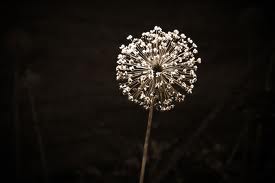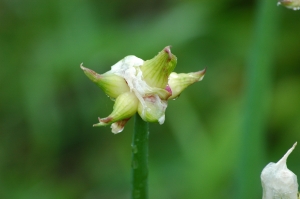
Grow Garlic at Home:
You can be a home chef, a dyed-in-the-wool greenthumb, or just looking for a fun project to try out – growing your own garlic is fun, easy to learn, and rewarding. You won’t believe how exciting it is to add the amazing flavor and spice of garlic to your home-cooked meal with fresh garlic you grew right in your own home or backyard.
Varieties
The first step in growing your own garlic is picking what variety you’d like to plant. You should know first-off that it is NOT a good idea to try to plant garlic bought at the grocery store, unless it is specifically sold as a garlic bulb for planting.
There are two main sub-species of garlic you need to choose from, all the other varieties and flavors come afterwards: hard necks and soft necks. Hard necks grow best in colder climates, are better at weathering a real winter, but may refuse to produce in warm weather. They produce a stiff stem from which the flower grows and dries out into a hard stick that is impossible to braid when curing. A good hard neck variety to try out is “Carpathian.”
Soft necks are the easiest to grow in mild weather regions. They are far less weather resistant, but they grow a flexible green stem that makes braiding easy when curing. Though they are more likely to make smaller cloves, soft necks keep longer in general. Some popular varieties and “Persian Star” and “Mother of Pearl.” Ask at a local garden store, nursery, or even ask the farmers at your local farmer’s market, what the best varieties are for your region.
Planting
 Garlic can be planted in spring or fall. Fall planting will result in bigger and more flavorful bulbs when you harvest next summer. If you live in an area that gets a hard frost, plant 6 to 8 weeks before the frost. In southern regions, March is a good time to plant. Start by breaking apart cloves from the bulb a few days before planting. The cloves stay in their papery husks. Make sure your soil is well-drained, moderately loose, and gets adequate sunlight.
Garlic can be planted in spring or fall. Fall planting will result in bigger and more flavorful bulbs when you harvest next summer. If you live in an area that gets a hard frost, plant 6 to 8 weeks before the frost. In southern regions, March is a good time to plant. Start by breaking apart cloves from the bulb a few days before planting. The cloves stay in their papery husks. Make sure your soil is well-drained, moderately loose, and gets adequate sunlight.
Plant the cloves about 4-8 inches apart and 2 inches deep, with their pointed edges facing up. When the weather warms and new shoots emerge, mulch around them to protect them them from freezes. Water around the crowns, not directly on them, and avoid overwatering, as this can lead to rot.
In the spring, as warmer temperatures come, the shoots will emerge through the ground. Mulch around them with straw to protect them from hard freezes. Once the weather has sufficiently warmed up, remove the mulch and trim the flower shoots. The tops of hard necked garlic can be trimmed and cooked. Many growers find this a nice spicy addition to stir-fry. Leaving the scape is believed by some to detract from the final size of the bulbs, as the plant’s energy is split between scape and bulb.
Harvesting
Depending on the type of garlic you chose to plant and your climate, you will either harvest early, midseason, or late in the season. Heat speeds up the growth of garlic and cold slows their growth down. Bulbs should be harvested on an overcast day when the soil is dry.
Your bulbs will be ready when about two-thirds of the leaves lower on the stalk are brown and papery but the upper leaves are still green. Don’t wait until all the leaves have dried. Loosen the soil around the bulbs and lift carefully, being sure not to cut or bruise the bulbs.
Proper Drying
Once you’ve harvested your garlic bulbs, you must dry them in a single layer. Choose an area where it is warm, but not too hot. Avoid direct sunlight. Once the outer skin of the bulbs has grown papery, clip the roots and brush off as much dirt as you can. A fun way of storing soft neck garlic is to braid the mostly (but not completely) dried stems together and leave them to hang.
Garlic should be stored at home between 55 and 70 degrees. Avoid any sunlight and do keep them in a space with good air circulation. Avoid storing your garlic in the refrigerator as excessive cold can trigger sprouting and trapped moisture can produce rot. Also, the lack of air flow will negatively impact the flavor of your fresh garlic! The flavor of the bulbs will increase as the bulbs dry.
Save some of the largest, best-formed bulbs for planting again in the fall. If you do this several times, you’ll produce your own unique variety of garlic to your liking! Have fun and happy growing season!
“What garlic is to salad, insanity is to art.”
Augustus Saint-Gaudens, ‘Reminiscences’
(photo credit: ukunurk)



